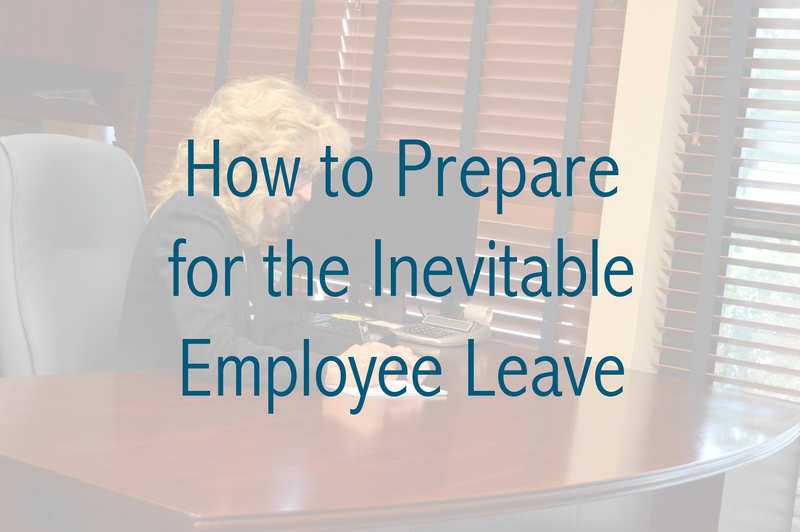

How to Prepare for the Inevitable Employee Leave

As a business owner, you need to prepare for both planned and unplanned absences of any length. This may be for reasons such as health, family emergencies, maternity leave, or even just a planned employee vacation. It can be for days, weeks, or a permanent leave. This will impact your company, even if the employee is part time with minimal responsibilities. In our company, one of our full time employees recently went out on maternity leave until the end of the year. We had months to prepare for this day, but that is not always the case. More often than not, employee leaves typically happen unexpectedly.
Why You Need to Prepare
Every business owner is going to find themselves in this position at some point, even if you are just starting out. The first few years we were in business, I was the only stopgap when anything went wrong, and it hampered my company from achieving its full potential as quickly as it could have. I remember the additional stress of assuming their responsibilities that weighed on me as well. Other times, you know that you need to terminate an employee, but you put it off because you are so bogged down with your own responsibilities, you know you cannot handle assuming theirs as well, in addition to interviewing potential replacements.
Create a Stopgap with Part Timers and Interns
In the beginning I went the route of employing stay at home professional’s that wanted to work part time until I was ready to assume the added cost and responsibility of a full time employee. A convenient and desired trade off can be flexible scheduling for lowered wages. Some businesses may be even too small for the additional staff, but you can create a fairly inexpensive solution for yourself with interns and part time help if you have that option.
For the last several years, I have employed a college intern that acted as my stopgap instead of myself. You can have your key full time employee, and then supplement with an intern, or a parent who wants to work flexibly part time, or a part time retiree. This additional staff is cross trained and acts as a buffer while your key employee is busy, absent, or terminated, and gives you the ability to continue with your own work, or rehire a replacement if necessary. Keep in mind though, that you do not want revolving door interns and staff, you want people that are going to be committed to you and your company to minimize training and recruiting costs, as well as learning curve errors.
Create Written and Accurate Systems
One of the first tasks you need to do in preparing for these events, is to create written systems and processes for all your employee responsibilities. An easy way to accomplish this is having your current employees type them up for you. You can then review them and test for accuracy and detail. You also need to have all logins and passwords in an accessible place, especially when you have someone else setting up accounts instead of yourself. With the rise of the need for security, most websites will not allow you access or will make it time consuming for you to regain access to accounts that you own if an employee leaves without passing that information on to you, time that you could better spend growing your business. These systems are critical for you since you are not actively in these roles and they will guide you efficiently if you are required to suddenly jump into that position. They also help new employees get up and running faster and relieve yourself of some of their training.
Keep Yourself Fresh and In the Loop
Periodically, you are going to want to test your systems and briefly step into these positions to make sure that you understand how your company is functioning beneath you. Its important to test your systems to make sure that they are up to date, and easy to follow. It brings a sense of relief when you test your own systems and feel confident that you can keep your company moving if something should happen with an employee. By occasionally stepping in, you also minimize the opportunity for an employee to begin hiding pertinent information or neglecting to create new written procedures for new responsibilities they have taken on. As you hire new staff, you can also have them test your procedures as well, and tweak and revise for you. Your procedures should be treated as living documents that are consistently being visited and revised. Some owners have a set it and forget it mentality, where they don’t want to be involved because things like bookkeeping and administration are not their skillset. However, taking the time to get these systems in place, prevent valuable time wasted trying to figure out what your employee was doing daily, then how to accomplish those tasks yourself and a lot of trial and error.




Comments